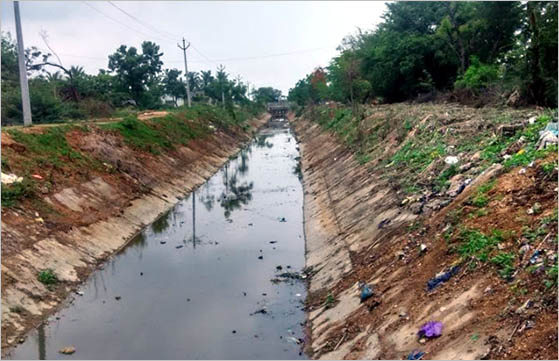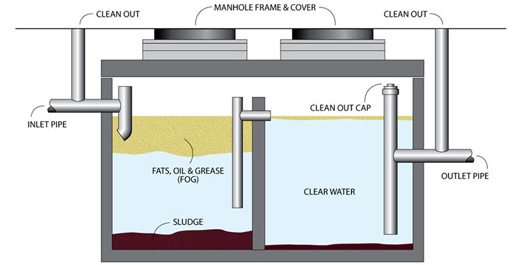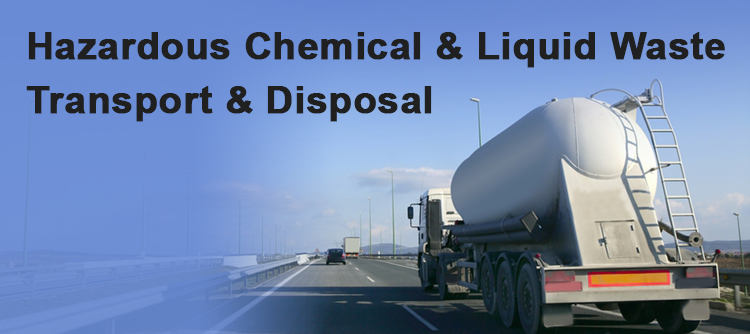Industrial Wastewater Treatment: Customized Solutions for Complex Wastewater Challenges
Industrial Wastewater Treatment: Customized Solutions for Complex Wastewater Challenges
Blog Article
How Fluid Waste Disposal Functions: An In-depth Summary of Methods and Technologies Utilized

Review of Liquid Waste Kind
The complexity of liquid waste types requires a thorough understanding of their qualities and effects for disposal. Fluid waste can extensively be classified right into numerous types, including industrial, metropolitan, farming, and contaminated materials. Each group displays distinct properties, requiring details management methods to minimize environmental and health dangers.
Industrial fluid waste originates from manufacturing procedures and commonly has a variety of pollutants, such as hefty metals, solvents, and organic substances. Community liquid waste, mainly consisting of wastewater from households and industrial establishments, consists of organic matter, nutrients, and pathogens (industrial wastewater treatment). Agricultural liquid waste, including overflow from ranches, might have plant foods, chemicals, and animal waste, positioning dangers to water high quality and environments
Unsafe liquid waste is defined by its toxicity, sensitivity, or potential to cause harm. Recognizing these diverse fluid waste types is crucial for developing reliable disposal techniques and ensuring conformity with ecological laws.
Physical Treatment Techniques

Testing is the preliminary action, where bigger bits and debris are removed from the fluid waste using displays or grates. This procedure shields downstream tools from damages and makes certain smoother operation. Following testing, sedimentation uses gravitational force to different solids from fluids. In sedimentation storage tanks, heavier particles settle at the base, creating a sludge layer, while the made clear liquid can be further treated.
Filtering is another important approach that entails passing the liquid via permeable products, such as sand or membrane layers, to catch smaller bits. This step enhances the top quality of the liquid, making it ideal for subsequent treatment processes.

Chemical Treatment Techniques
Chemical treatment methods are important for successfully taking care of fluid waste, particularly in resolving dissolved and colloidal contaminants that physical methods may not sufficiently get rid of. These techniques use different chemical agents to reduce the effects of, precipitate, or change dangerous substances into less harmful forms.
One typical technique is coagulation and flocculation, where chemicals such as alum or ferric chloride are included in advertise the aggregation of put on hold fragments. This procedure improves sedimentation, enabling for simpler removal of the resulting sludge. Furthermore, oxidation procedures, utilizing agents like Learn More Here chlorine or ozone, are employed to damage down complex organic substances and virus, making the waste safer for discharge or further treatment.
Neutralization is another critical strategy, which changes the pH of acidic or alkaline waste streams to neutral levels, avoiding potential injury to downstream systems and the atmosphere. Additionally, advanced oxidation procedures (AOPs) utilize mixes of oxidants and ultraviolet light to weaken persistent toxins, attaining a greater level of therapy effectiveness.
Organic Treatment Processes
Organic treatment procedures play a critical function in the management of fluid waste by blog here utilizing microbes to break down natural issue and reduce pollutant levels. These processes can be generally categorized right into anaerobic and cardio treatments, each using specific microbial communities to attain effective waste deterioration.
Aerobic treatment entails making use of oxygen to promote the break down of natural materials by germs. This process is frequently implemented in triggered sludge systems, where oygenation containers supply a conducive atmosphere for microbial development, leading to the oxidation of organic pollutants. The resultant biomass can be divided from treated effluent through sedimentation.
In contrast, anaerobic therapy occurs in the absence of oxygen, depending on various bacteria to break down natural matter. This method is especially useful for high-strength waste, as it generates biogas, a renewable energy resource, while lowering sludge manufacturing. Technologies such as anaerobic digesters are regularly employed in commercial and local applications.
Both anaerobic and cardio biological treatments not only minimize the environmental impact of liquid waste but also help with source healing, making them crucial parts of lasting waste monitoring approaches. Their effectiveness, adaptability, and performance support their extensive implementation throughout numerous markets.
Emerging Technologies in Disposal
Innovative strategies to fluid waste disposal are swiftly progressing, driven by improvements in innovation and an enhancing focus on sustainability. Among these arising innovations, membrane layer bioreactors (MBRs) have actually gotten traction for their capacity to combine organic treatment with membrane layer filtering, resulting in his explanation high-grade effluent that can be recycled in different applications. MBRs enable smaller sized footprints and extra reliable operations compared to standard systems.
Another appealing growth is using anaerobic digestion incorporated with nutrient healing modern technologies, which not only deals with liquid waste however additionally generates biogas and recuperates important nutrients like nitrogen and phosphorus. This double advantage enhances resource performance and reduces environmental impact.
Furthermore, progressed oxidation processes (AOPs) are being embraced for the deterioration of intricate organic contaminants. These approaches make use of powerful oxidants and catalysts to break down impurities at the molecular degree, offering an extremely efficient remedy for difficult waste streams.
Moreover, the integration of fabricated knowledge and maker understanding in waste management systems is optimizing operational effectiveness and predictive upkeep, bring about reduced costs and improved ecological compliance. These technologies reflect a considerable shift towards more sustainable and effective liquid garbage disposal techniques.
Conclusion
In final thought, effective fluid waste disposal requires a comprehensive understanding of numerous techniques and modern technologies. By continuously progressing these approaches, it comes to be possible to resolve the growing obstacles associated with fluid waste, ultimately contributing to ecological protection and resource healing.
Fluid waste disposal is a vital facet of environmental management, calling for a thorough understanding of various methods and modern technologies tailored to different waste kinds. Fluid waste can broadly be categorized into a number of kinds, consisting of industrial, community, farming, and dangerous waste. Agricultural liquid waste, including overflow from ranches, might contain plant foods, chemicals, and pet waste, posing risks to water high quality and ecosystems.
Different physical treatment techniques play a critical role in managing liquid waste successfully - industrial wastewater treatment.In verdict, reliable fluid waste disposal demands a thorough understanding of various techniques and technologies
Report this page